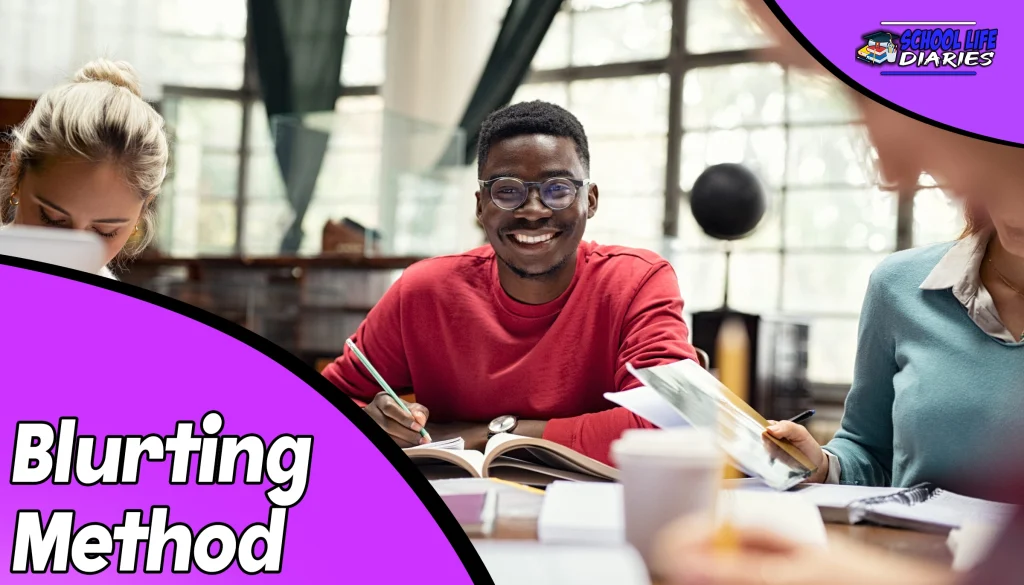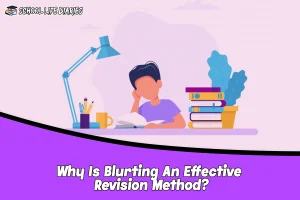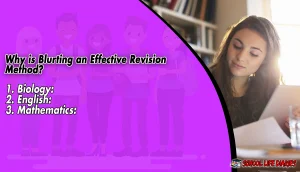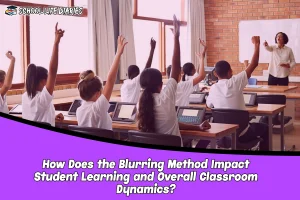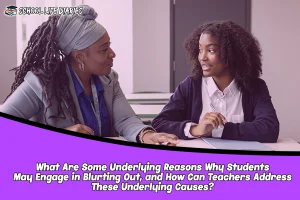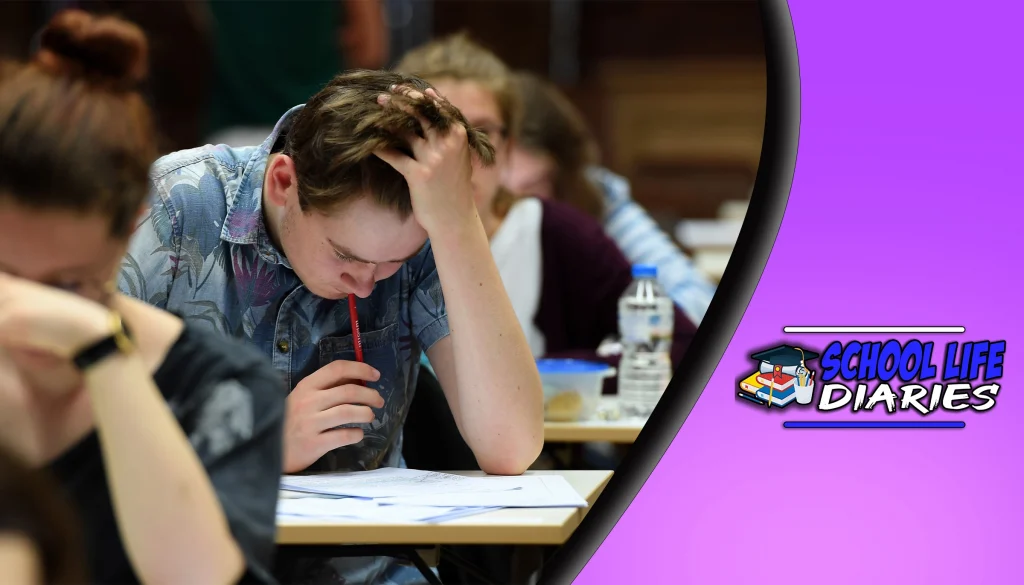The blurting method is a revision technique that has gained popularity among students and educators alike. This method involves the act of blurting out information or ideas during the process of studying or reviewing the material. It can be seen as a spontaneous and unfiltered way of expressing thoughts, allowing for a more dynamic and interactive learning experience.
One of the reasons why the blurring method is considered effective in revision is its ability to stimulate active engagement with the material. By blurting out ideas, students are encouraged to think critically, make connections, and articulate their thoughts on the topic at hand. This not only enhances their understanding but also helps them retain information better.
Blurting can promote a sense of freedom in learning by breaking away from traditional methods that often involve passive listening or reading. Students have the opportunity to explore their own perspectives and contribute to discussions in an organic manner.
In conclusion, the blurring method offers an alternative approach to traditional revision techniques by encouraging active participation and fostering a sense of freedom in learning. Its impact on student learning and classroom dynamics can be significant as it promotes critical thinking, retention of information, and student engagement.
What is Blurting?
Blurting is a revision method that involves the spontaneous verbalization of one’s thoughts and ideas about a topic without any self-censorship or judgment. This technique can be effective for several reasons. Firstly, it allows individuals to access their subconscious knowledge and insights, bringing forth fresh perspectives and ideas that may have been overlooked during more structured revision methods.
Blurting encourages active engagement with the material, as speaking out loud helps to reinforce learning and memory retention. Lastly, this method promotes fluency in articulating ideas, enhancing communication skills which are crucial in academic settings.
Why Is Blurting An Effective Revision Method?
An effective revision method that can significantly enhance learning and retention is blurting. This technique involves recalling information without any external aids or prompts, relying solely on one’s memory and cognitive processes. By engaging in active recall, individuals are able to retrieve information from their long-term memory, reinforcing neural connections and strengthening the storage of that knowledge.
This engagement enhances the overall learning experience by allowing individuals to actively manipulate and interact with the information they have learned. Blurting offers several benefits that make it an effective revision method. Firstly, it promotes deep processing of information by requiring individuals to actively retrieve knowledge from their memory rather than passively reviewing notes or materials. This active engagement strengthens neural pathways associated with that information, making it easier to recall in the future.
Secondly, blurting encourages self-reflection and self-assessment as individuals assess their own understanding of a topic or concept. Through this process, they can identify areas where they need further review or clarification, enabling them to focus their efforts on improving those specific areas.
Lastly, blurting provides an opportunity for immediate feedback as individuals verify the accuracy of their recollections. This instant feedback allows for adjustments in thinking and understanding while the material is still fresh in one’s mind.
Incorporating blurting into your revision routine can lead to significant improvements in learning outcomes. By actively retrieving information from memory through blurting sessions, you reinforce neural connections associated with that knowledge and deepen your understanding of the subject matter. Additionally, engaging multiple cognitive processes simultaneously during these sessions enhances your overall cognitive abilities and problem-solving skills.
Why is Blurting an Effective Revision Method?
Blurting is an effective revision method that can be applied to various subjects, including Biology, English, and Mathematics. This technique involves quickly recalling and writing down all the information one can remember about a specific topic without worrying about accuracy or organization.
1. Biology:
Biology encompasses the study of living organisms and their interactions with each other and the environment. It is a vast field that covers various aspects of life, from microscopic cellular processes to complex ecological interactions.
One key area of focus in biology is understanding evolutionary patterns. Evolutionary patterns refer to the changes that occur in organisms over time as a result of genetic variations and natural selection. By studying these patterns, biologists can gain insight into how different species have adapted and evolved to survive in their respective environments.
Another important aspect of biology is the study of cellular processes. Cells are the basic building blocks of all living organisms, and understanding their functions and mechanisms is crucial for comprehending how life operates at its most fundamental level. From DNA replication to protein synthesis, cellular processes play a vital role in maintaining homeostasis and ensuring the proper functioning of an organism.
Biology also investigates ecological interactions between organisms and their environment. Ecological interactions involve studying how different species interact with one another within ecosystems, including predator-prey relationships, symbiotic associations, and competition for resources. These interactions have far-reaching implications for both individual species and entire ecosystems.
Biology offers a comprehensive understanding of living organisms by exploring evolutionary patterns, cellular processes, and ecological interactions. This knowledge not only deepens our appreciation for the complexity of life but also allows us to appreciate the interconnectedness between different species within our world.
2. English:
English is a discipline that allows individuals to explore the intricacies of language and literature, evoking emotions through the power of words. It offers effective strategies for language learning and enhances communication skills.
Through studying English, individuals can develop a deep understanding of how language works and how it can be used to convey meaning in various contexts. One effective strategy in English language learning is immersing oneself in the language. This can be achieved by reading books, watching movies or TV shows, and engaging in conversations with native speakers. By exposing themselves to authentic English materials, learners can improve their vocabulary, grammar, and pronunciation skills.
Practicing writing and speaking in English regularly helps individuals become more comfortable expressing themselves in the language. Another important aspect of English is its role in developing communication skills. Effective communication involves not only conveying information accurately but also connecting with others on an emotional level. Through analyzing literary texts and exploring different writing styles, learners can develop their ability to express themselves effectively and creatively.
Studying English provides individuals with effective strategies for language learning while enhancing their communication skills. By immersing themselves in the language and practicing writing and speaking regularly, learners can improve their proficiency in English. Moreover, through analyzing literature and exploring different writing styles, they develop the ability to connect with others at a deeper level by evoking emotions through powerful words.
3. Mathematics:
Mathematics is a discipline that enables individuals to explore the complexities of numbers and patterns, providing them with the tools to solve problems and make logical deductions. In mathematics discussions, problem-solving strategies play a crucial role. These strategies involve analyzing the given information, identifying relevant concepts and principles, and devising a systematic approach to finding a solution. Problem-solving in mathematics requires critical thinking skills as well as creativity to come up with innovative solutions.
Another important aspect of mathematics is mathematical proof. These are rigorous arguments that demonstrate the validity of mathematical statements or propositions. Proofs provide certainty and establish the truth of mathematical claims, ensuring that conclusions are based on sound reasoning rather than intuition or guesswork. They involve logical reasoning, step-by-step explanations, and adherence to established rules of mathematical logic.
Mathematics also has numerous real-world applications that go beyond abstract calculations. It plays a vital role in fields such as engineering, finance, physics, computer science, and even art. For example, mathematicians use calculus to model physical phenomena like motion or population growth; statisticians analyze data to make informed decisions; game developers employ geometry for creating realistic virtual environments. The wide range of applications highlights the relevance and practicality of mathematics in various aspects of life.
Mathematics provides individuals with problem-solving strategies and tools for making logical deductions. Mathematical proofs ensure the validity of mathematical claims through rigorous reasoning. Moreover, mathematics finds extensive applications in real-world scenarios across different disciplines and industries. By understanding these aspects of mathematics discussions can foster an appreciation for its significance in our daily lives while empowering individuals with valuable analytical skills.
How Does the Blurring Method Impact Student Learning and Overall Classroom Dynamics?
The implementation of the blurring method in the classroom has been found to have a significant impact on student learning and overall classroom dynamics. This teaching technique, which involves deliberately obscuring certain information or concepts, can increase engagement and promote active student participation. By introducing an element of uncertainty and challenge into the learning process, students are encouraged to think critically and problem-solve independently. As a result, they become more actively engaged with the material and develop a deeper understanding of the subject matter.
One of the key benefits of the blurring method is its positive effect on student engagement. When students encounter blurred information or concepts, they are required to actively analyze and interpret what they see. This promotes a sense of curiosity and encourages students to ask questions, seek clarification, and explore different possibilities. By actively engaging with the material in this way, students become more invested in their own learning journey.
Impact on learning
Implementing the blurring method can also enhance student participation within the classroom. As students work together to decipher blurred information or solve problems that involve uncertain elements, they naturally collaborate and communicate with one another. This fosters a sense of community within the classroom as students learn from each other’s perspectives and experiences.
In terms of classroom management, incorporating the blurring method can provide teachers with new opportunities for fostering a positive learning environment. By intentionally creating moments of ambiguity or challenge through blurring certain aspects of their lessons or assignments, teachers can encourage autonomy among their students while still providing necessary support when needed.
This approach helps develop independent thinkers who are capable of navigating complex situations without constant guidance from their teacher. By promoting active engagement through this method, teachers may experience fewer behavior management issues as students become more focused on their own learning rather than seeking distractions.
In conclusion, the implementation of the blurring method in the classroom has a significant impact on student learning and overall classroom dynamics. By increasing engagement, promoting active participation, and providing opportunities for autonomous learning, this teaching technique encourages students to develop essential skills while fostering a positive and collaborative learning environment.
What Are Some Underlying Reasons Why Students May Engage in Blurting Out, and How Can Teachers Address These Underlying Causes?
One possible reason for students engaging in spontaneous outbursts and blurting out in the classroom is a lack of impulse control. Some students may struggle with managing their emotions and controlling their impulses, leading them to blurt out without thinking. Teachers can address this underlying cause by fostering a supportive classroom environment that encourages active listening and respectful communication. By implementing strategies such as teaching self-regulation techniques, providing clear expectations for behavior, and offering praise and rewards for appropriate classroom interactions, teachers can help students develop better impulse control skills.
To address this issue, teachers can implement strategies that promote engagement and focus in the classroom. This could include incorporating interactive activities, using visual aids or technology to enhance learning, breaking down complex tasks into smaller manageable steps, and providing frequent opportunities for movement and hands-on learning.
Some students may engage in blurting out as a way to seek attention or gain social recognition from their peers. They may feel the need to assert themselves or stand out in the classroom setting. Teachers can address this underlying cause by creating an inclusive classroom environment where all students feel valued and respected. This can be achieved by promoting positive peer relationships through team-building activities, encouraging collaboration and group work, facilitating open discussions where each student’s voice is heard, and acknowledging individual strengths and contributions.
There are various reasons why students engage in blurting out in the classroom setting. By addressing these underlying causes through fostering a supportive classroom environment that encourages active listening and respectful communication, promoting engagement and focus strategies, as well as creating an inclusive atmosphere where all students feel valued, teachers can effectively address the issue of blurting out and create a conducive learning environment for their students.
Conclusion: Blurting Method
The blurring method is a revision technique that involves blurting out information aloud as a way to reinforce learning and improve memory retention. It has been shown to be an effective method for revising material, as it engages both auditory and verbal processing skills. By actively vocalizing information, students are able to internalize and better understand the content they are studying.
The blurring method also has an effect on overall classroom dynamics. When students engage in blurting out, it can disrupt the flow of a lesson and distract other students from their own learning. Furthermore, if not addressed properly, it can create an environment where blurting out becomes the norm rather than an exception.
There are several underlying reasons why students may engage in blurting out during class. Some students may struggle with impulse control or attention issues, while others may feel compelled to contribute without considering the appropriate time or context. Teachers can address these underlying causes by implementing strategies such as providing clear expectations for classroom behavior and offering alternative outlets for student participation, such as designated question-and-answer sessions or small group discussions.

